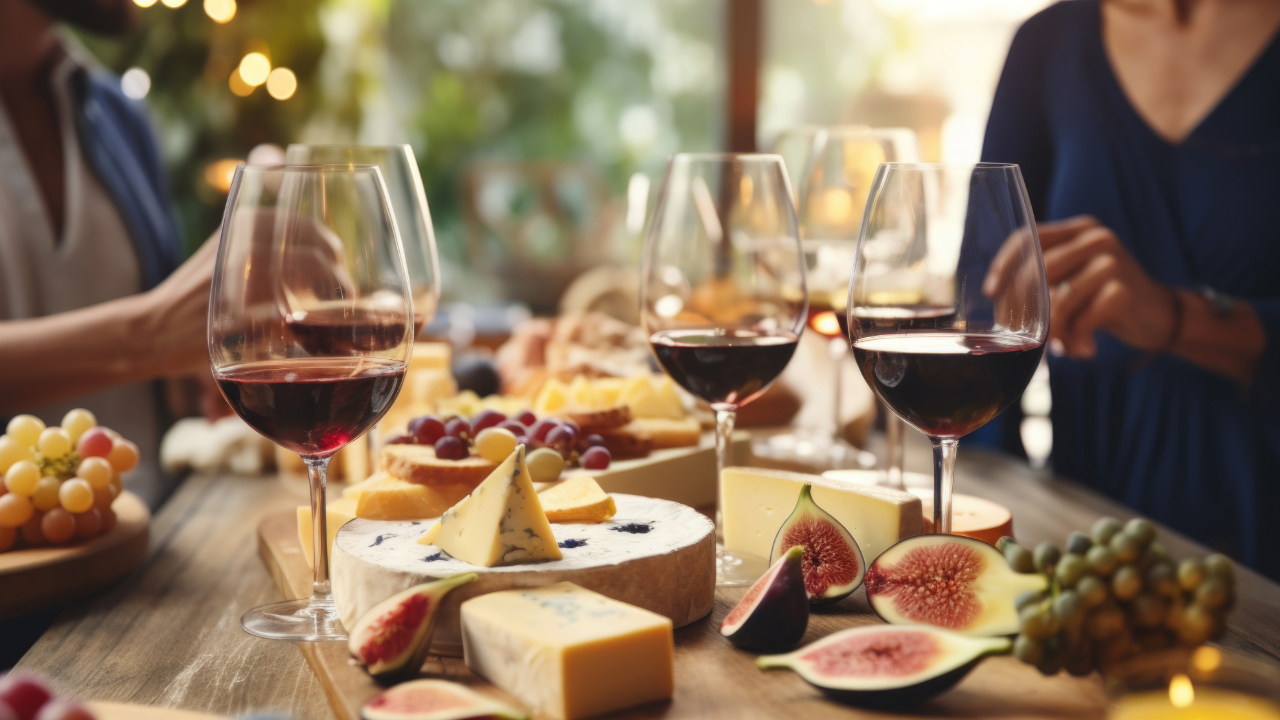The fusion of food and wine stands as a testament to the exquisite art of elevating dining to an experience of unmatched pleasure. This guide ventures beyond the mere selection of dishes and wines, aiming to orchestrate a symphony of flavors that resonates with every palate. Here, we unravel the essence of pairing, where each sip and bite harmonize, enhancing the inherent virtues of both the beverage and the meal.
The Philosophy of Pairing
The process of pairing wine with food is akin to a dance, where balance, harmony, and contrast play pivotal roles. It’s not merely about aligning the finest of wines with exceptional dishes but about the alchemy that transpires when they are thoughtfully combined. This alchemy seeks to amplify the dining experience, making every meal a journey of discovery.
Mastering the Art of Pairing
The artistry of pairing is embodied in two fundamental approaches, each designed to create a distinct sensory experience:
- Congruent Pairings: This method involves matching wines and foods that share common flavors and characteristics, aiming to amplify shared qualities. It’s about creating a harmonious blend where similarities converge to enhance the dining experience.
- Contrasting Pairings: Contrasting pairings delight in the magic of opposites, where the wine and food bring out the best in each other through their differences. This approach seeks to balance richness with acidity, sweetness with bitterness, offering a palate of experiences that intrigue and satisfy.
In this guide, we delve into the nuanced world of wine and food pairings, inviting you on a journey that promises to enrich your dining encounters. Through careful selection and a deep appreciation for the interplay of flavors, we aim to guide you towards creating moments of culinary bliss, where each pairing is not just a meal, but a memory to cherish.
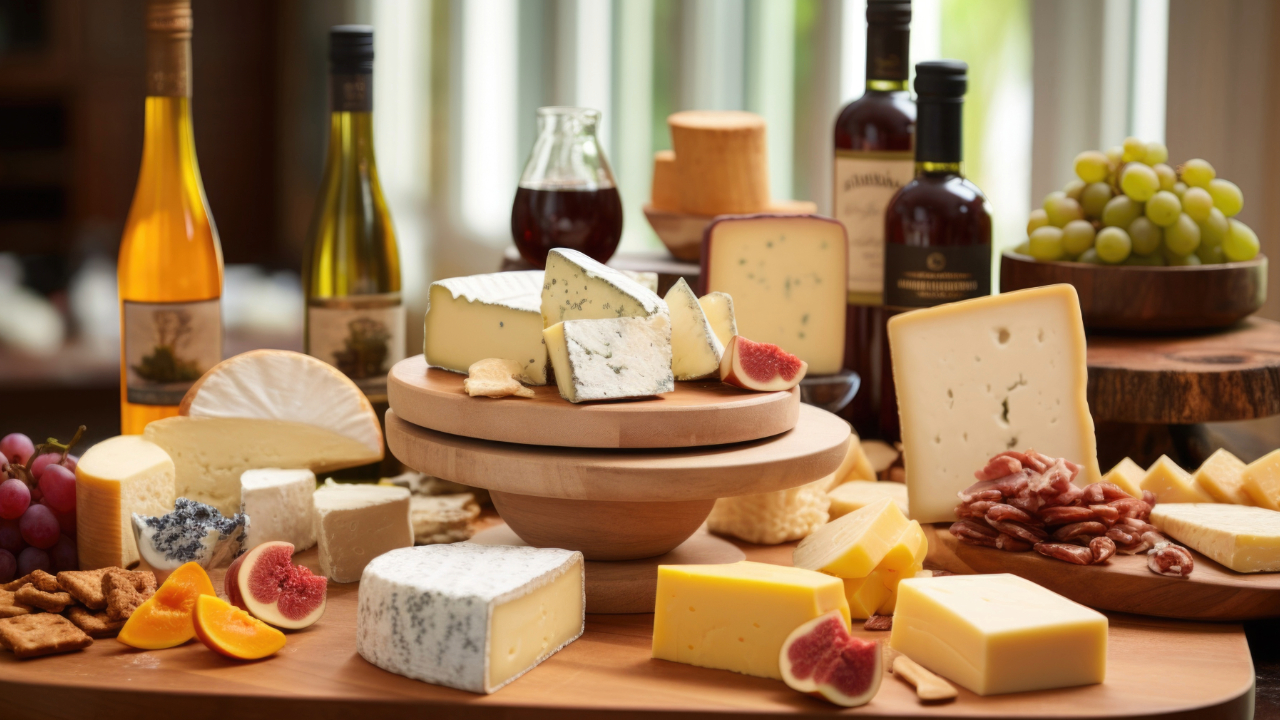
How to Pair Food and Wine
Food and wine pairing is akin to unlocking the secrets of a culinary treasure chest, where each combination promises a voyage of flavors that transcend the ordinary dining experience. Here, the essence of pairing transcends mere consumption, elevating it to an art form where each sip and bite harmonize, creating moments of unparalleled delight.
Navigating through the world of food and wine pairing begins with an appreciation for the delicate balance that must be struck. It’s not simply about the act of combining; it’s about curating experiences that enhance and complement the character of both the wine and the dish.
How to Pair Wine With Food You Like
- Start With What You Love: The foundation of a memorable pairing is pleasure. Begin with wines and dishes that resonate with your palate. If your preference leans away from white wines, then let your culinary journey embrace the reds and rosés that speak to you. Broaden your horizons from a base of personal enjoyment.
- The Symphony of Balance: The quintessence of pairing lies in the balance. A robust red wine may find its match in a succulent piece of lamb, creating a rich tapestry of flavors. Conversely, the light, refreshing embrace of a white wine can elevate a dish of grilled fish, introducing a delicate dance of tastes.
Key Elements of Food and Wine Pairing
- Harmonize with the Leading Flavor: The cornerstone of a successful pairing is aligning the wine with the dish’s dominant character—be it the aromatic spices, the richness of a sauce, or the primary ingredient itself. This alignment ensures that the wine complements and enhances the dining experience rather than overshadowing it.
- Congruence and Contrast: Two paths lie before you. The first, congruence, seeks to amplify shared flavors, creating a seamless and intensified experience. The second, contrast, brings opposite flavors into a delightful equilibrium, where the sweetness of a Riesling gently counters the spice of a dish, offering a refreshing complexity.
As you venture forth, let these guidelines be your compass, guiding you through the myriad possibilities that food and wine pairings present. It’s a journey of discovery, where each pairing offers a new horizon to explore, promising not just a meal, but an adventure for the senses.
Flavor Profiles
In the intricate dance of food and wine pairing, understanding the flavor profiles is akin to holding the key to unlocking a world of sensory delights. This nuanced layer of the pairing process is where the true artistry comes into play, allowing for a symphony of flavors to emerge from the thoughtful combination of wine and cuisine.
Essential Flavor Profiles
To navigate this landscape, one must first acquaint themselves with the six fundamental flavor profiles that serve as the building blocks of pairing:
- Acidic: Wines with a crisp, sharp character can rejuvenate the palate, making them perfect companions for rich, creamy, or fatty dishes.
- Fatty: Unlike wines, this profile is more about the food, where the richness and creaminess of certain dishes seek balance through the acidity or tannic structure of a wine.
- Bitter: The tannins in red wine introduce a bitter profile that can stand up to hearty, robust dishes, offering a counterbalance to the richness.
- Salty: Saline nuances in food can be beautifully offset by the sweetness or effervescence of a wine, creating a harmonious contrast.
- Sweet: Sweet dishes or components benefit from wines that either complement their sweetness or contrast it with acidity to cleanse the palate.
- Alcohol: Higher alcohol wines can amplify the richness of a dish, making them ideal for pairing with bold, intensely flavored foods.
Crafting the Perfect Pairing
The magic lies in the mix and match of these profiles, where each pairing is a discovery of complementary or contrasting delights. Consider a wine with tannic bitterness to slice through the richness of a fatty dish, or a sweet wine to accompany a dessert, creating a layered experience of flavors.
A Glimpse into Wine Characteristics
- Red Wines: Known for their tannic bitterness, they offer a robust companion to hearty dishes.
- White and Rosé Wines: Shine with their acidity, cutting through the richness of fatty foods to create a refreshing balance.
- Sweet Wines: With their pronounced sweet notes, they are the perfect counterpoint to salty or spicy dishes, offering a palate-cleansing sweetness.
As you embark on this journey of pairing, let these flavor profiles be your guide through the diverse world of wine and food. Whether it’s a casual dinner, a wedding feast, or a special celebration, the knowledge of these profiles empowers you to create moments of culinary excellence, where every sip and bite tells a story of harmony and delight.
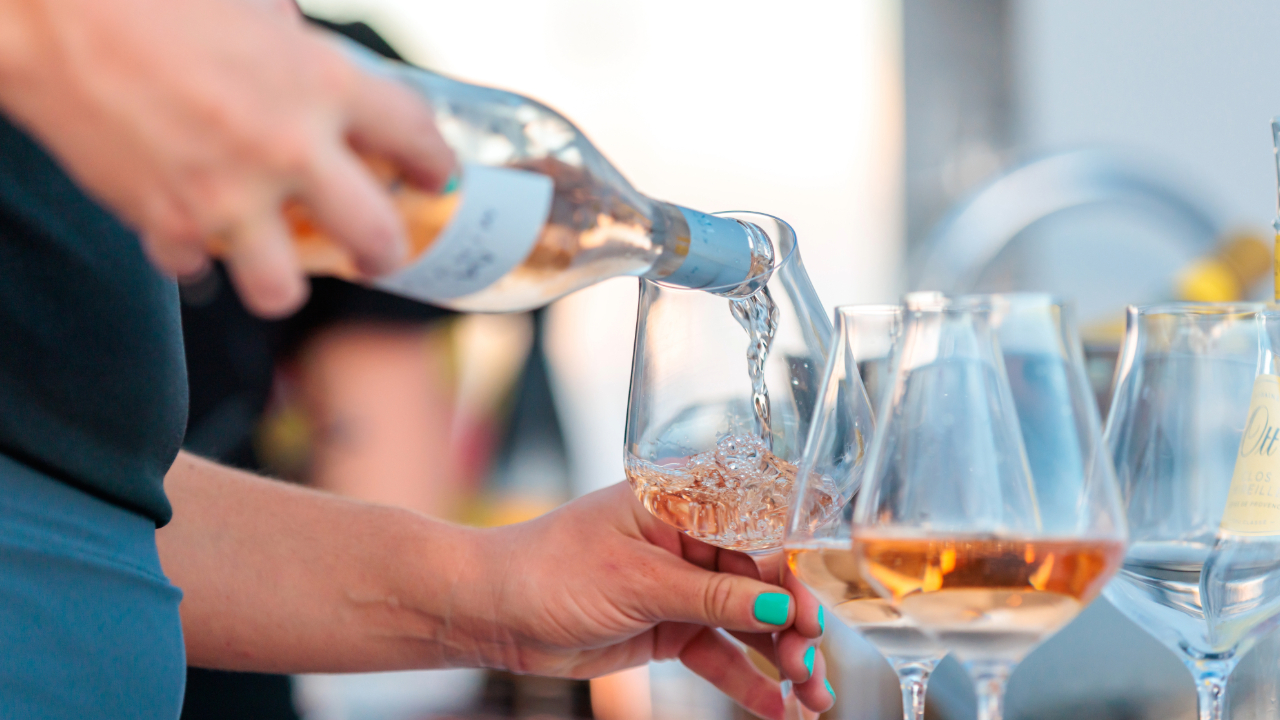
Congruent vs. Contrasting Wine Pairing
In the exquisite realm of gastronomy, where wine meets dish, the alchemy of pairing unfolds through two distinct methodologies: congruent and contrasting pairings. This section explores the essence of these approaches, guiding you through the art of creating a harmonious dining experience that resonates with every palate.
Congruent Pairings
This method celebrates the union of wine and food that share similar flavor profiles, creating a harmonious and amplified tasting experience. By aligning like with like, congruent pairings enhance the shared flavor notes, bringing a balanced and intensified pleasure to the senses.
- Example: The buttery richness of a Chardonnay alongside creamy mac and cheese; where the wine’s velvety texture and the dish’s creamy sauce echo each other, elevating the dining experience through shared characteristics.
Contrasting Pairings
Contrasting pairings, on the other hand, delight in the dance of difference. Here, the goal is to pair wine and food that offer opposing flavors, creating a dynamic balance that heightens the distinct qualities of each. This method excites the palate, offering a play of flavors that complements and contrasts in equal measure.
- Example: The creamy and rich profile of mac and cheese when paired with a sharper, more acidic Pinot Grigio. The wine’s crispness cuts through the richness of the dish, providing a refreshing counterpoint that elevates both the wine and the food.
Navigating the Pairing Process:
- Begin with understanding the dominant flavors of your dish; is it rich and creamy, or bold and spicy?
- Choose a congruent pairing to amplify shared flavors for a harmonious experience, or a contrasting pairing to create a delightful balance of opposing tastes.
- Consider the intensity of both the wine and the dish to ensure one does not overwhelm the other, but rather, they complement and elevate the dining experience.
This exploration of congruent versus contrasting pairings opens a pathway to mastering the art of food and wine harmony. Whether you’re drawn to the amplification of similar flavors or the dynamic balance of opposites, the journey through these pairing methodologies promises an enriching culinary adventure, transforming each meal into a celebration of taste and texture.
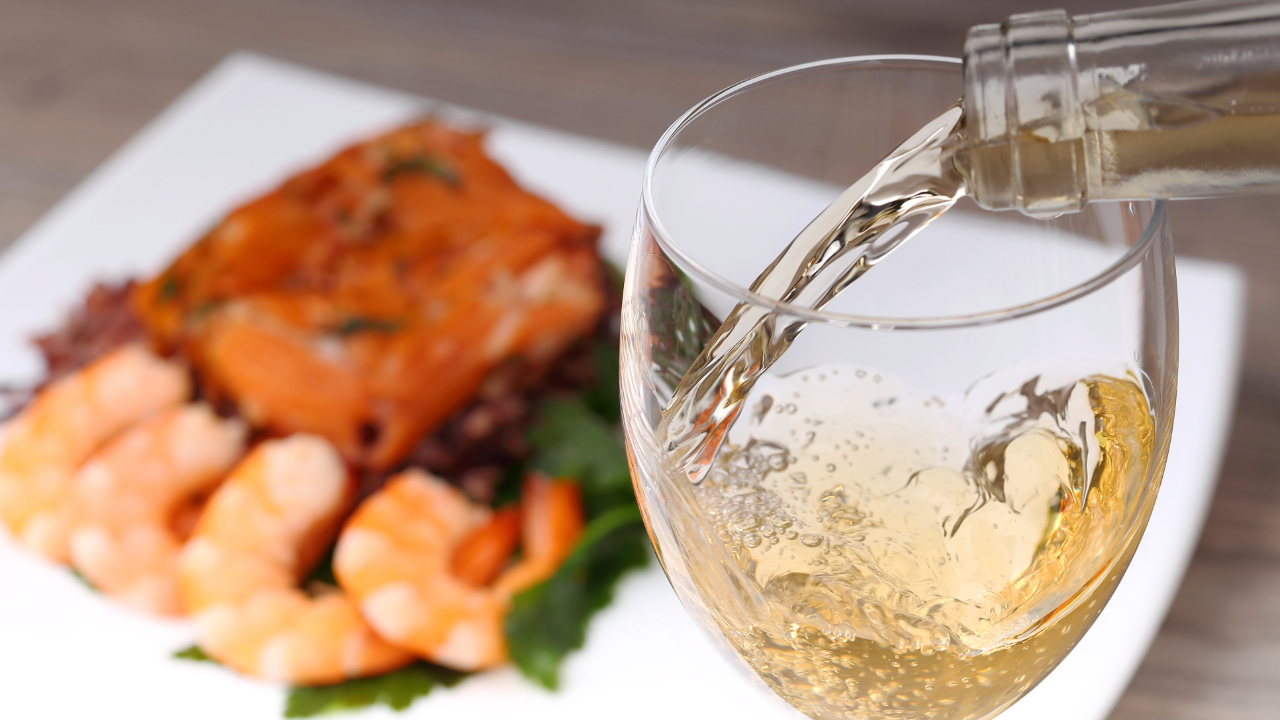
What Makes the Perfect Pairing?
In the quest to demystify the art of wine pairing, we present a curated selection of combinations that promise to enchant your palate and elevate your dining experience. This guide offers a glimpse into the harmonious world where wine meets dish, creating a symphony of flavors that resonate with the essence of culinary artistry.
10 Classic Wine and Food Pairings
- Chardonnay & Salmon: The elegance of a medium-bodied Chardonnay, with its dry finish, perfectly complements the rich, tender flavors of salmon, enhancing the subtle nuances of both the fish and the wine.
- Cabernet Sauvignon & Red Meat: The robust character of a Cabernet Sauvignon, with its deep flavors and tannic backbone, finds its match in the savory depth of red meats, creating a classic pairing that is both bold and harmonious.
- Pinot Noir & Earthy Dishes: A Pinot Noir, known for its versatility and earthy undertones, pairs beautifully with dishes that feature mushrooms or the rustic flavors of a hearty pizza, grounding the meal in a sense of comfort and sophistication.
- Pinot Grigio & Seafood: The light, crisp profile of a Pinot Grigio brings out the delicate flavors of seafood, offering a refreshing contrast that elevates the overall taste experience.
- Sauvignon Blanc & Tart Accents: The vibrant acidity and zesty character of a Sauvignon Blanc cut through the tartness of dressings and sauces, adding a lively dimension to each bite.
- Rosé & Cheesy Delights: With its gentle acidity and fruity elegance, a Rosé wine is the perfect companion to the creamy richness of cheese, balancing the flavors with a touch of sophistication.
- Sparkling Wine & Salty Snacks: The effervescence of sparkling wine dances beautifully with the crispness of salty foods, creating a playful and satisfying pairing that delights the senses.
- Riesling & Spicy or Sweet Dishes: A lightly sweet Riesling complements the heat of spicy dishes as well as the sweetness in desserts, offering a versatile pairing that harmonizes with a range of flavors.
- Syrah & Bold Spices: The intense, spicy notes of a Syrah embrace the complexity of spiced dishes, rounding out the flavors with a robust finish that lingers on the palate.
- Zinfandel & Rich Fare: The deep, fruity richness of a Zinfandel pairs splendidly with the luxurious textures of pâtés, mousses, and terrines, enhancing the indulgence of each bite.
This guide serves as your compass in the delightful exploration of food and wine pairings, where the journey is as rewarding as the destination. Whether you’re a seasoned connoisseur or a curious novice, these pairings invite you to discover the joy of combining exquisite wines with your favorite dishes, promising moments of culinary bliss that linger long after the meal has ended.
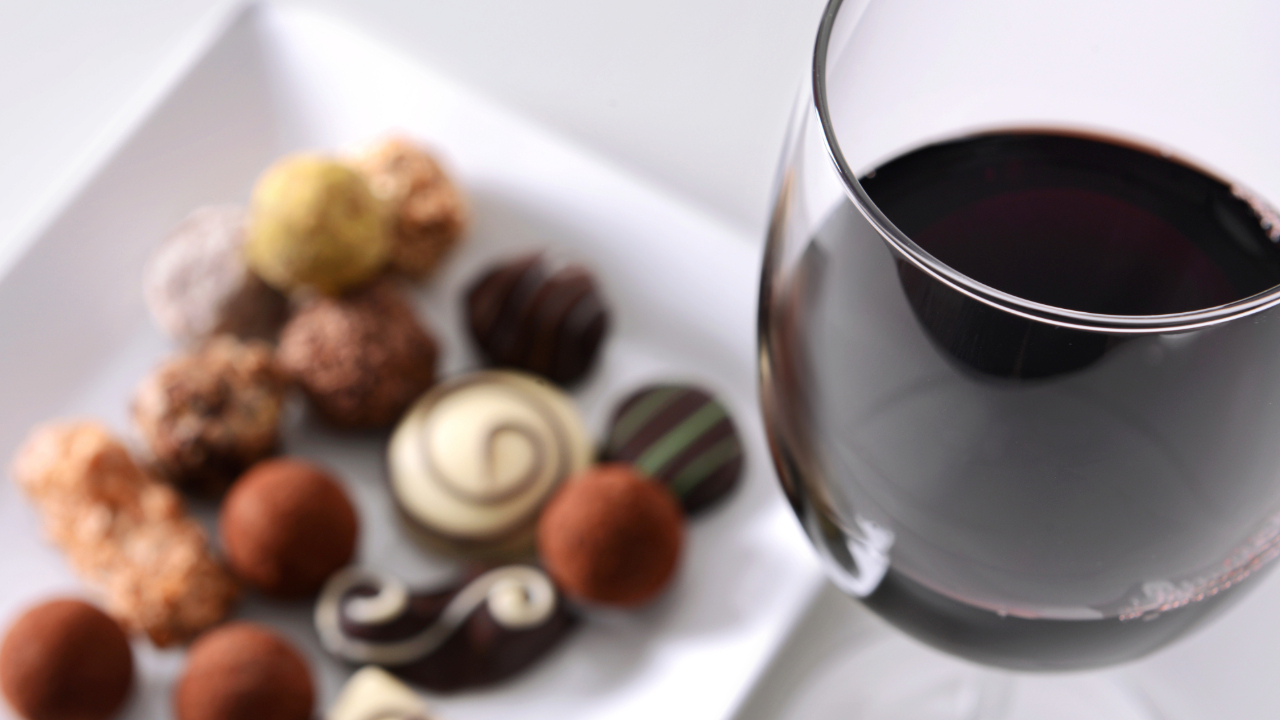
Pairing Wine and Chocolate
The delightful interplay between wine and chocolate unveils a realm where each pairing is not merely a combination but a celebration of flavors that dance together in perfect harmony. This guide invites you to explore the enchanting world of wine and chocolate pairings, offering insights to elevate your tasting experience to new heights of enjoyment.
Pairing Wine and Milk Chocolate
- Riesling & Milk Chocolate: A German Riesling, with its light sweetness and hints of citrus and honey, enhances the creamy sweetness of milk chocolate, creating a refreshing and delightful pairing.
- Moscato d’Asti & Milk Chocolate: The effervescent and fruity Moscato d’Asti pairs beautifully with milk chocolate, complementing its sweetness with notes of lychee and peach.
- Champagne & Milk Chocolate: Opt for a Champagne with a touch of sweetness, such as Sec or Demi-Sec, to complement the creamy richness of milk chocolate.
- Pinot Noir & Milk Chocolate: A light-bodied Pinot Noir, with its fruity notes and subtle hints of cinnamon, marries well with the sweetness of milk chocolate, offering a harmonious blend of flavors.
- Brachetto d’Acqui & Milk Chocolate: This sweet, light-bodied wine, bursting with raspberry notes, presents a perfect match for the silky smoothness of milk chocolate.
Pairing Wine and Dark Chocolate
- Cabernet Sauvignon & Dark Chocolate: Seek out a fruit-forward, stainless steel-aged Cabernet to balance the bitterness of dark chocolate, creating a pairing that sings with complexity and depth.
- Red Blend & Dark Chocolate: A juicy New World red blend brings together the bold flavors of dark chocolate with a burst of berry notes, crafting a richly satisfying experience.
- Shiraz & Dark Chocolate: The jammy, fruit-forward characteristics of Shiraz from Australia complement the intense flavors of dark chocolate, making for a unique and delightful pairing.
- Zinfandel & Dark Chocolate: A full-bodied Zinfandel, with its fruity richness and slight sweetness, pairs exquisitely with the robust flavors of dark chocolate, enhancing the tasting experience.
Pairing Wine and White Chocolate
- Gewurztraminer & White Chocolate: The aromatic Gewurztraminer, with its notes of lychee and spice, pairs wonderfully with the creamy, nutty profile of white chocolate.
- Late-Harvest Riesling & White Chocolate: The rich, spiced sweetness of a late-harvest Riesling complements the smooth and sweet nuances of white chocolate, creating an enchanting pairing.
- Rosé & White Chocolate: A west coast Rosé, with its strawberry and raspberry notes, makes a romantic and flavorful companion to white chocolate.
- Chardonnay & White Chocolate: Both oaked and unoaked Chardonnays bring body and complementary flavors to white chocolate, enhancing its creamy texture with smooth, nutty, or pear notes.
Alternative Wine and Chocolate Pairings
- Spicy Chocolates: Pair these with a sweet red like Brachetto or a bold, tannic Cabernet to either soothe or intensify the heat.
- Salted Caramel Chocolates: A fruity Shiraz or a rich Port wine can beautifully balance the sweet and salty flavors of caramel chocolates.
- Creme Filled Chocolates: An oaked Chardonnay adds depth and complements the creamy filling with its rich body and oaky notes.
- Hazelnut Chocolates: Enjoy these with a Chardonnay, Pinot Noir, or Merlot, each offering distinct flavors that harmonize with the rich nuttiness of hazelnuts.
When orchestrating a wine and chocolate tasting, begin with the lighter chocolates and wines, gradually moving to the darker, more intense flavors. This progression ensures a tasting journey that is as enlightening as it is delightful, allowing each pairing to unveil its unique story of taste and texture. Embrace the adventure of discovering your favorite combinations, and let the world of wine and chocolate pairings enrich your culinary explorations.
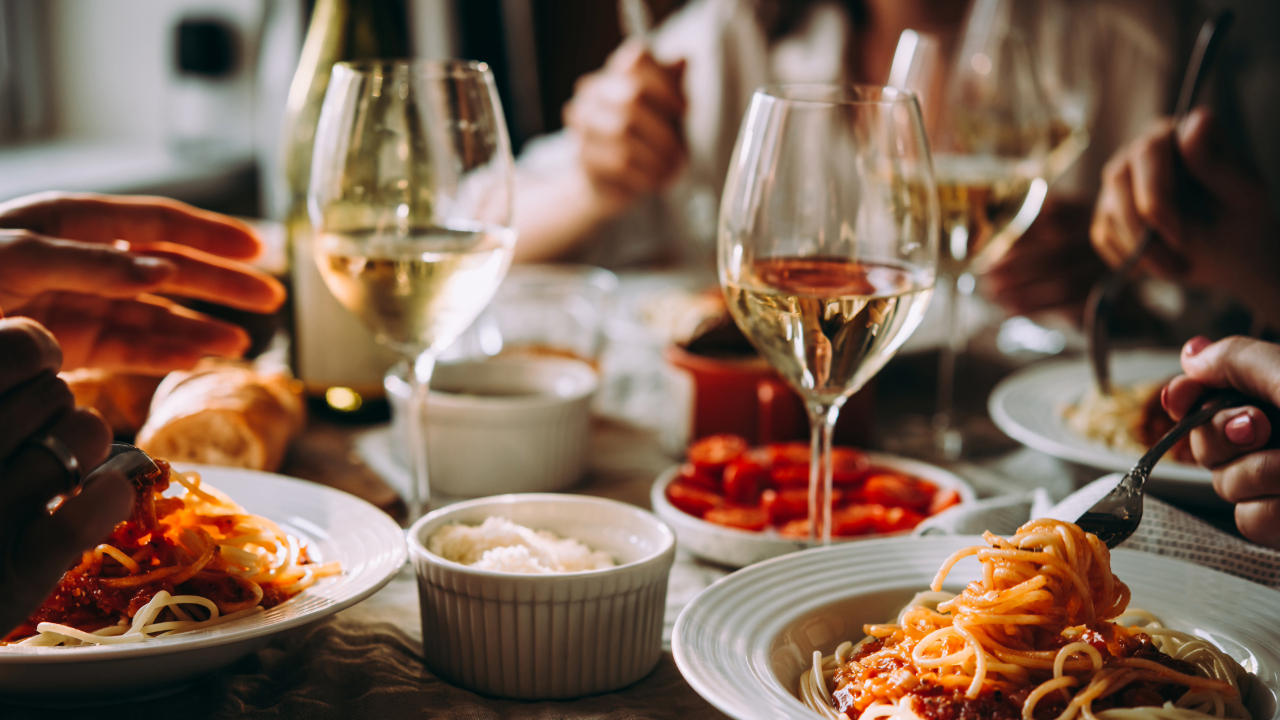
Pairing Wine and Pasta
With each pasta dish offering its unique profile, the right wine pairing is key to unlocking a harmonious blend of tastes. This guide, inspired by a collective effort to demystify the art of pairing, ventures into the exquisite pairings of wine and pasta, promising to surprise and delight your palate.
Carbonara Pairings
- For a classic Carbonara, with its rich blend of pancetta, eggs, and cheese, full-bodied red wines with earthy tones are ideal. Consider a robust Chianti or a tannic Malbec to balance the creaminess.
- If white wine is your preference, a crisp Pinot Grigio or a Sauvignon Blanc can cut through the richness, offering a refreshing contrast.
Cheese-Based Pasta Pairings
- The sharpness of Cheddar or the intensity of blue cheese requires a wine with higher acidity. A light and crisp Sauvignon Blanc or a fruity Pinot Grigio can complement cheese-based pastas beautifully.
- For red wine enthusiasts, a Pinot Noir or a Sangiovese provides a delightful balance to the rich cheese flavors.
Tomato-Based Pasta Pairings
- Tomato-based sauces call for wines that can match their acidity and richness. A Cabernet Sauvignon, Sangiovese, or Zinfandel pairs wonderfully, offering a robust complement.
- For a lighter touch, consider a Pinot Grigio, Sauvignon Blanc, or a dry rosé to add a refreshing zest.
Pesto-Based Pasta Pairings
- Pesto’s vibrant flavors of basil, pine nuts, and garlic pair splendidly with wines that aren’t overly acidic. A Sauvignon Blanc or a light Pinot Grigio complements pesto without overwhelming it.
Seafood Pasta Pairings
- The delicate flavors of seafood pasta are best accompanied by light, crisp wines such as Sauvignon Blanc, Pinot Grigio, or Riesling.
- For a red wine pairing, opt for a medium-bodied Pinot Noir or a fruity Zinfandel to harmonize with the seafood’s richness.
Vegetable Pasta Pairings
- Vegetable-centric pasta dishes pair well with light, fruity white wines. A light Chardonnay, Pinot Grigio, or Sauvignon Blanc can elevate the fresh vegetable flavors.
- For a touch of rosé, consider a Chenin Blanc, Pinot Gris, or even a sparkling wine for an effervescent twist.
Spicy Pasta Pairings
- Spicy pasta dishes require a wine that balances heat without competing. A dry, crisp white like Pinot Grigio, Chardonnay, or Riesling can complement the spice.
- Among reds, a bold Cabernet Sauvignon or a Chianti offers enough structure and tannins to stand up to the heat, providing a balanced pairing.
Navigating the art of pairing wine with pasta is an adventure in taste, a journey where each dish invites a specific wine to share the table. This exploration into the heart of culinary pairing promises not just a meal, but an experience that delights and inspires, transforming the simple act of dining into a memorable feast.
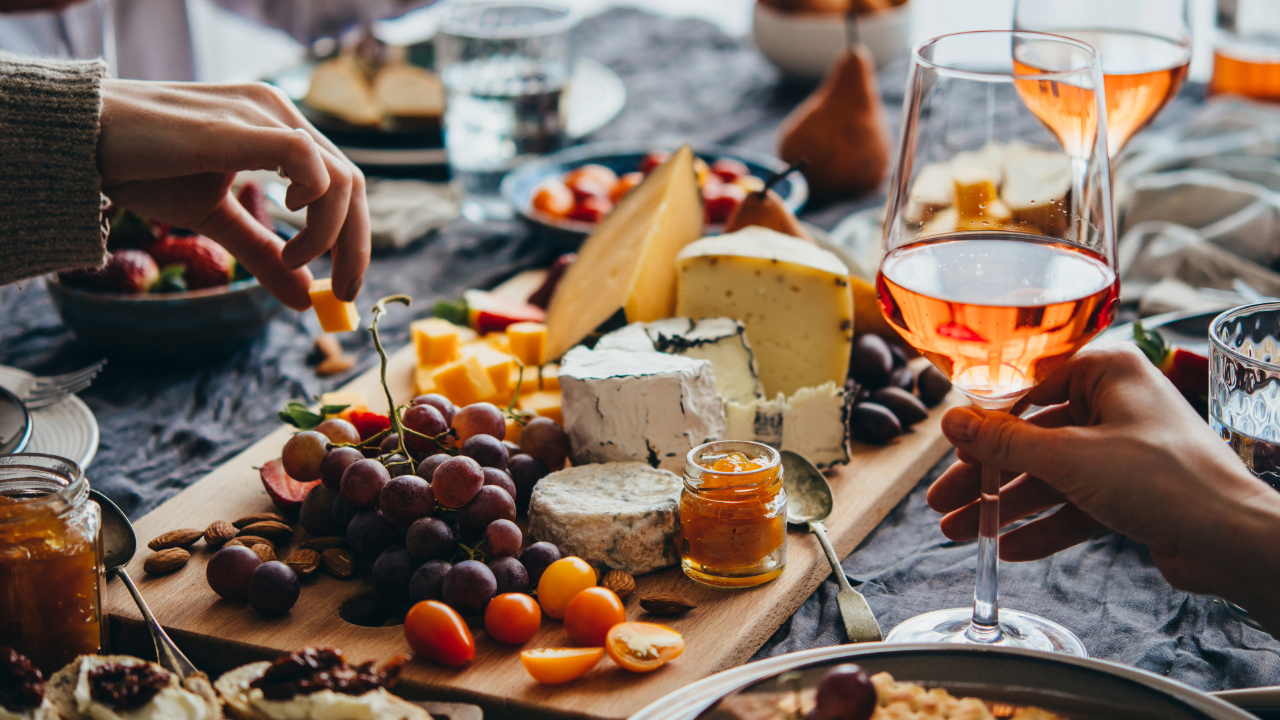
A Toast to Culinary Journies
In our culinary voyage, we’ve navigated through the harmonious world of food and wine pairings, exploring how the perfect blend of flavors can elevate a simple meal into an extraordinary experience. Our journey has revealed the artistry behind matching various dishes with their ideal wine counterparts, emphasizing the transformative power of a well-chosen pairing.
As we draw this exploration to a close, we invite you to continue this journey beyond the page. Whether you’re an aficionado or a curious novice, the adventure into the realm of food and wine pairings is endless, filled with discoveries waiting to be made.
For those eager to delve deeper into the art of pairing and to experience the pinnacle of culinary harmony, we extend an exclusive invitation. Click the link below to uncover a selection of award-winning wines, each curated to complement your culinary adventures. From the velvety depths of a robust red to the crisp, refreshing embrace of a white, find the perfect companion for your next meal and transform your dining into an event to remember.
Embark on this journey of taste, tradition, and discovery. Let the world of exquisite wines enhance every meal, turning each bite into a celebration of flavors that dance across the palate. Click below and raise your glass to the endless possibilities that await.

